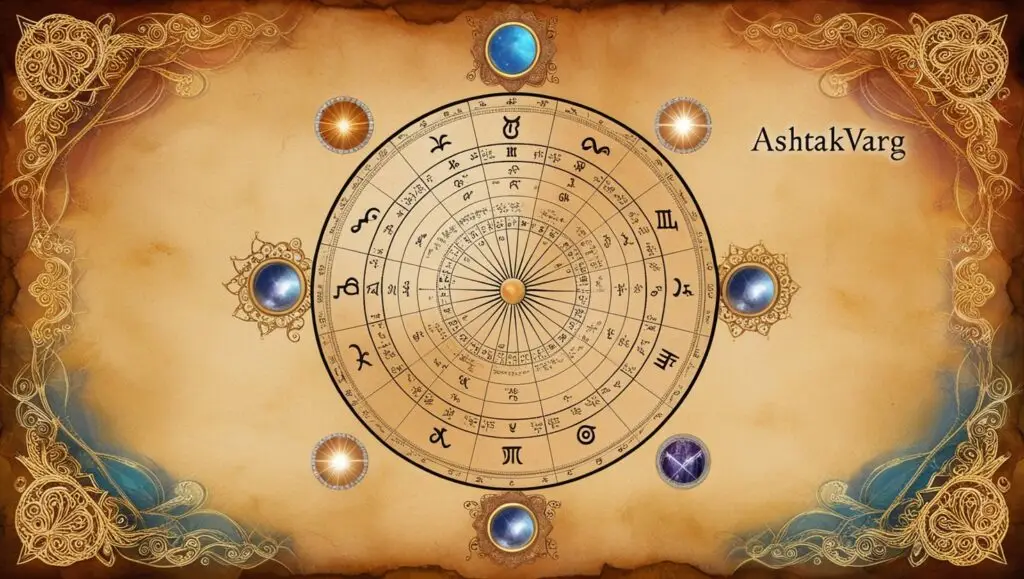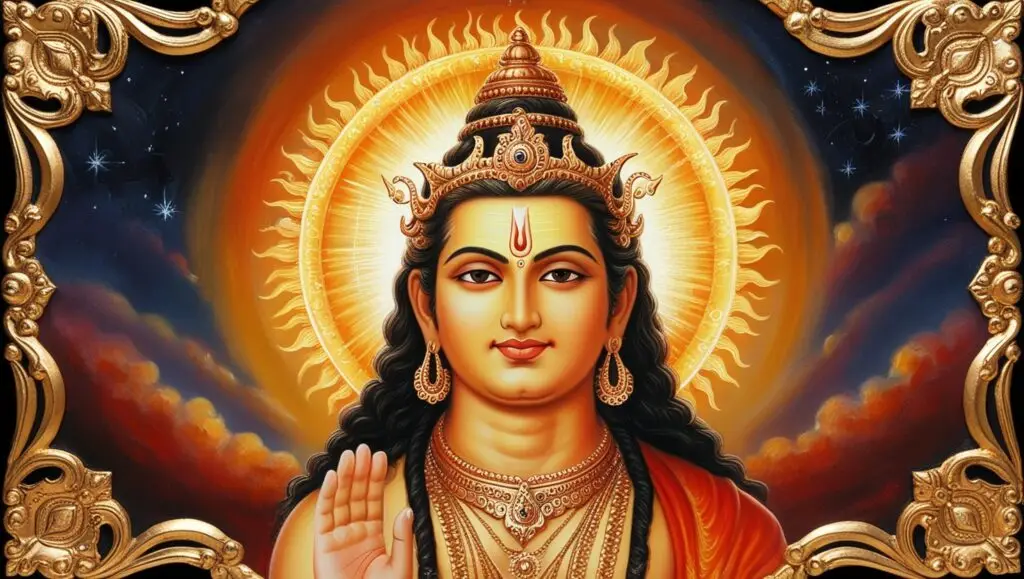Let’s see why we should learn Ashtaka Varga:
To learn astrology, we first need to study traditional Vedic astrology. Once we have a solid foundation, we should also learn Ashtakavarga to make our readings more accurate, increasing the likelihood of predictions being 95–97% correct.
“Ashtaka” means eight, which refers to the eight tables in the system. You may already be familiar with Vedic astrology, but it can be quite complex. We look at various charts, including the Lagna Kundli, Navamsha, Moon Kundli, Chalit Kundli, Shodash Varga Kundli, as well as the positions of exalted and debilitated planets, Drishti, Yogas, Yutis, and more. Additionally, we consider the degree and condition of each planet.
Maitreya Rishi, the disciple of Sage Parashara, once asked his guru if there was a simpler method for prediction. In response, Sage Parashara created Ashtaka Varga. Parashara wrote its verses in Sanskrit, preparing eight tables, or koshtakas, for the seven planets and Lagna. He emphasized that not only one planet but also other planets play a role in the overall influence. Bhinashtaka for the Sun, Moon, Mars, Mercury, Jupiter, Venus, and Saturn were created, followed by the Sarvashtaka table. According to Parashara, each planet gives auspicious points from its position to other positions.
Here’s a breakdown of the points for each planet:
- Sun: 48 points
- Moon: 49 points
- Mars: 39 points
- Mercury: 54 points
- Jupiter: 56 points
- Venus: 52 points
- Saturn: 39 points
This totals 337 points. When divided by 12 houses, it gives an average of 28 points. Each planet contributes 0 to 8 points, with an average of 4 points. We assess whether the points are above or below 28 and consider how many points each planet gives.
If a planet’s points are less than 4, the desired outcome may not be obtained, while points greater than 4 indicate a more favorable result. The goal is to study how many points each planet contributes in the Ashtaka Varga and which house it falls into.
It is said that the 6th, 8th, and 12th houses are better with fewer points, but this varies from case to case. If the 6th and 8th houses have more points than the Lagna house, it can indicate struggles, such as debt, illness, property issues, or secret enemies. However, this rule isn’t absolute. For example, a strong 6th house can indicate good support from bosses or subordinates. If Saturn or Mars has good points, it can protect from secret enemies, and if Jupiter or Venus has good points, it can help with loans. A strong Mercury indicates good relations with maternal relatives.
If the 8th house has good points, it can signal sudden financial gains, property benefits, or gains from in-laws or a spouse. The 12th house, when strong, may indicate foreign connections, while a strong Sun, Jupiter, and Mars suggest good health. On the other hand, an unfavorable Saturn can lead to challenges, such as imprisonment (Bandhan Yoga). However, these positions don’t always yield negative outcomes—it depends on the planets’ placements.
We can assess the situation and provide predictions based on the points in each house.
For example:
- Lagna (1st house): A strong Lagna with good points indicates good health, self-confidence, and the ability to achieve goals.
- 2nd house (Family): Good points here suggest wealth accumulation, a good family life, and financial security.
- 3rd house (Prowess): This house reveals a person’s capabilities, hard work, and relationships with siblings. It can also indicate frequent travel and matters related to paperwork or visas.
- 4th house (Sukh Sthan): This house represents happiness and comfort, relationships with the mother, and material happiness like owning a house or having a luxurious life.
- 5th house: Education, romance, progeny, lottery, and artistic pursuits like music, dance, and sports are linked to this house. It can also indicate whether a love marriage will occur.
- 7th house (Marriage and Partnerships): This house reveals marital happiness, the nature of the spouse, and the possibility of owning a business. Points from Mars, Venus, and Jupiter influence this.
- 9th house (Fortune): This house reflects the relationship with the father, foreign travel, and higher education.
- 10th house (Career): This house shows career success, popularity, and work-related achievements.
- 11th house (Gains): The 11th house represents all types of benefits and fulfillment of desires, as well as friendships.
It’s better if the 11th house has more points than the 10th house. If the 10th house has more points, it could indicate lower returns from hard work, leading to dissatisfaction. Additionally, the 6th house (struggles) and 12th house (expenses) should ideally have fewer points compared to the Lagna house for less conflict and financial stability.
In general:
- 3rd, 6th, 10th, and 11th houses: If these houses have more than 30 points, the person earns through their own hard work. This is called “Upachanya Sthana.”
Other criteria:
- If the Sarvashtaka Bindu is between 26 and 30, the horoscope is considered generally auspicious.
- If it’s above 31, the horoscope is highly auspicious.
- If it’s below 25, the desired result may not be achieved.
- If the 2nd house points are higher than the expenditure house, the person is likely good at saving money.
- If the 11th house points are greater than the 10th house, the person experiences greater satisfaction and financial gain from their work.
Lastly, it’s important to consider the positions of the planets, their alliances, and their points in relation to each house when making predictions.
By combining Vedic astrology with Ashtaka Varga, we can offer more precise predictions about various aspects of life, including health, finances, career, marriage, and more.


